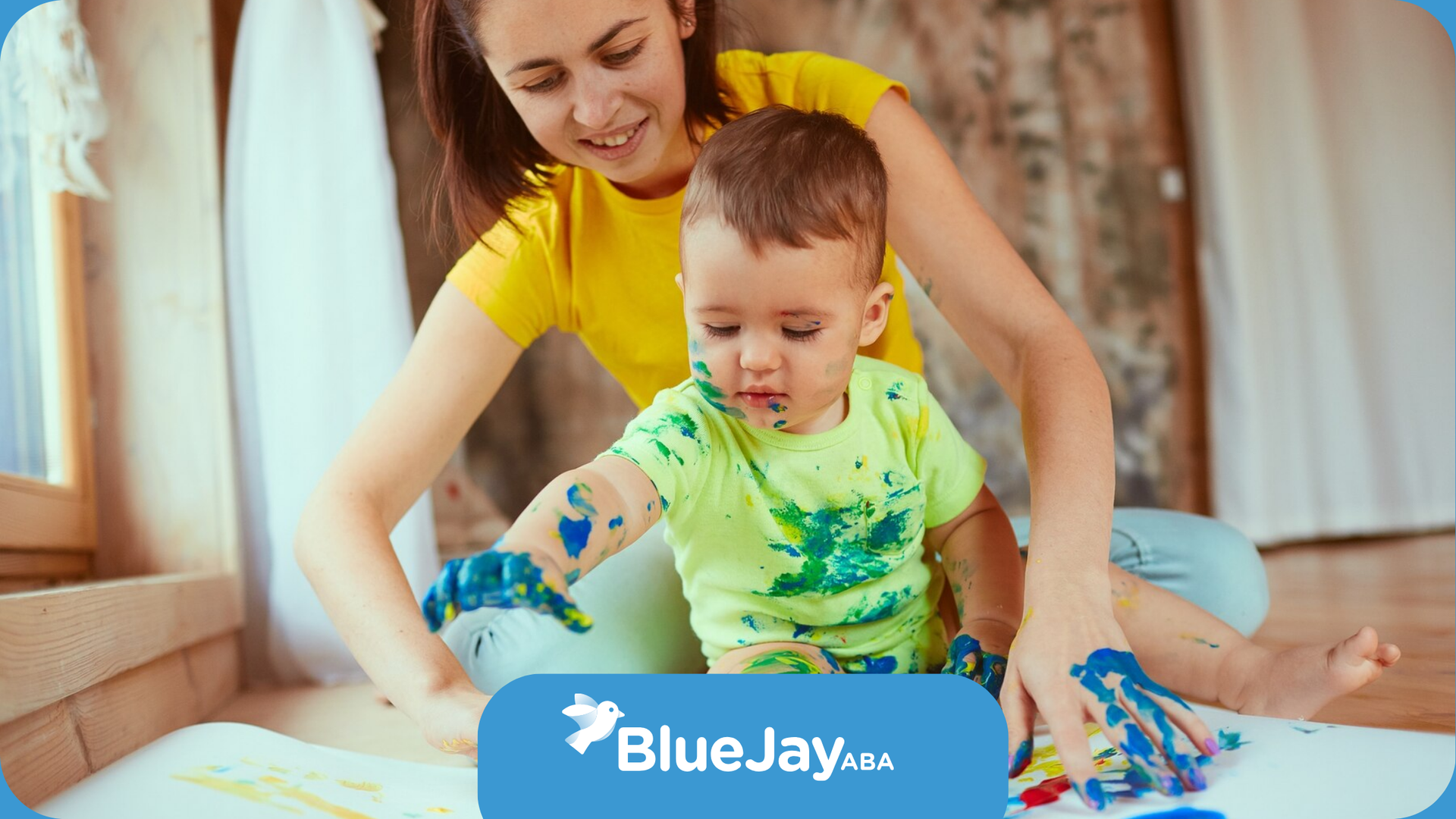Deciding When to Quit ABA Therapy
ABA therapy is a well-known and effective treatment for children with autism spectrum disorder (ASD). It tailors to each child and aims to improve their communication, social skills, and daily living skills. Choosing when to end ABA therapy is very personal. It depends on the child’s progress, how comfortable the family feels, and what the certified behavior analyst recommends.
Understanding ABA Therapy and Its Goals
ABA therapy is based on behavior analysis. It looks at how we learn and how we can change behaviors. The main goal of ABA therapy is to help children with autism learn useful skills. It also aims to reduce tough behaviors that may get in the way of their growth.
This therapy works by taking complex behaviors and breaking them into smaller, easier steps. This makes learning simpler for kids. With positive reinforcement, children are encouraged to repeat good behaviors. This helps them learn and make progress.
The Basics of ABA Therapy for Autistic Children
ABA therapy for children with autism spectrum disorders is a complete way to help them. It starts with a full assessment to see the child's strengths, challenges, and specific needs. After this assessment, a treatment plan is made that lists the goals and strategies tailored to the child.
ABA services usually include one-on-one therapy sessions, but group sessions can help too. In these sessions, therapists use different behavior analysis techniques. These techniques teach new skills, reduce problem behaviors, and help children use what they learned in other places.
Parents and caregivers play a key role in ABA therapy. They learn strategies to support their child's progress at home and in the community.
Setting Realistic Goals with ABA Therapy
Setting real and achievable goals is very important for success in ABA therapy. These goals need to fit the child’s specific needs. They can focus on many skills, like improving communication, social interaction, and daily living skills such as dressing and eating alone.
The number and length of ABA therapy sessions can change based on the treatment plan. Some children might need more therapy with several sessions each week. Others may do well with fewer sessions as they improve.
Regular checks on progress are important. They make sure treatment goals are being reached and help make changes when needed.
Recognizing Signs of Progress in ABA Therapy
Recognizing how a child is improving in ABA therapy can bring a lot of joy to both the child and the family. Progress can show up in many ways. These include better communication skills, more independence, and fewer challenging behaviors.
It's key to understand that every child makes progress in their way. Some may see big changes fast, while others may improve slowly over time. Keeping clear communication with the child’s BCBA is very important. This helps in tracking progress, fixing concerns, and celebrating successes as they happen.
Milestones to Look For in Your Child's Development
As children go through ABA therapy, parents and caregivers can watch for certain signs that show they are improving. These signs are more than just learning new skills—they also show better overall happiness and ability to handle daily life.
One important sign to look for is better social skills. Children who used to be shy or found it hard to talk with others may begin to start conversations, share toys, and join in on group fun. Another good sign is when children show they can use the useful skills they learned in different places.
It’s important to remember that each child develops and learns at their own own speed. Celebrating even the small wins can boost a child's confidence and encourage them to keep learning and growing.
When Improvement Stalls: What It Means
While ABA therapy has shown it can be successful, there are times when it feels like progress stops. This situation can worry families, but it's normal. Children have different ways of learning. What helps one child may not help another in the same way.
Instead of seeing a stall as a bad sign, think of it as a chance to look at and change the treatment plan. Skilled BCBAs are experts in behavior analysis. They can notice small details in a child's actions that may be holding back progress.
Working together is important when dealing with stalls in ABA therapy. Parents, caregivers, and the BCBA should team up to make choices that help the child reach their full potential.
Factors to Consider Before Ending ABA Therapy
Deciding to stop ABA therapy is an important choice. It needs careful thought and teamwork among parents, caregivers, and the child's BCBA. It's great to celebrate achievements and see the child's growth. Also, it's crucial to make sure that stopping therapy is good for the child's long-term needs.
When making this decision, consider the child's unique needs. Think about how they are doing now and the support the family has. You should also look at other therapies or help that might keep supporting the child's progress.
Evaluating the Severity of ASD Symptoms Over Time
The symptoms of autism spectrum disorder (ASD) can be very different from one child to another. Some kids may have mild symptoms that improve with early help and therapy. Others may struggle with bigger challenges and need ongoing support.
It's important to check how severe a child's ASD symptoms are when deciding if they should stop ABA therapy. If a child's symptoms reduce a lot, it might mean they have gained the necessary skills to handle daily life more independently. If the symptoms continue even with therapy, it could show that they still need support or may benefit from other therapies like occupational therapy or speech therapy. Keep in mind that ASD is a lifelong condition. Support needs may change over time.
The Role of Family and Social Support Systems
Family members are very important in helping a child during ABA therapy. They are always there in the child's life, watching them grow, celebrating their successes, and giving love and support. When thinking about ending ABA therapy, it's important to look at how the family can keep helping the child's growth.
Strong support systems also help a child do well after ABA therapy. These systems include more than just family. They can also involve teachers, friends, and groups in the community.
Getting involved with other families who have gone through ABA therapy can be helpful. It gives you ideas, shares experiences, and creates a sense of community that goes beyond the therapy itself.
Transitioning Out of ABA Therapy
Transitioning out of ABA therapy needs careful planning. This ensures the child keeps making progress and stays emotionally healthy. Parents, caregivers, and the ABA provider need to communicate openly. This helps the transition go smoothly.
Typically, this process involves slowly reducing therapy hours. This lets the child get used to a less strict environment while still getting support. It is also important to use ways to keep making progress outside of therapy. Practicing new skills in various settings helps support positive behaviors.
Preparing Your Child for the Transition
As you get ready to move your child out of ABA therapy, including them in this decision can help reduce stress. It also helps them feel more in control of their journey. Depending on how old they are and what they understand, talk to them about the changes in a positive and comforting way.
Start by slowly cutting back on ABA therapy hours. This will help your child get used to a less structured schedule while still getting support. Work with your child's BCBA to set up a detailed discharge plan. This plan should include ways to keep up the good progress outside of therapy.
Keep in mind that transitions take time. It’s normal for kids to need to adjust. Be patient with them, encourage their efforts, and celebrate their achievements during this time.
Strategies for Maintaining Progress Outside of Therapy
Transitioning out of comprehensive ABA therapy doesn't mean abandoning the progress your child has made. In fact, this phase presents an opportunity to integrate learned skills into everyday life and foster greater independence. To support this transition, consider incorporating these strategies:
- Consistency is Key: Maintain consistent routines and expectations at home, reinforcing the positive behaviors learned during therapy.
- Generalization: Encourage your child to apply learned skills in various settings such as school, social gatherings, and community outings.
- Collaboration: Collaborate closely with your child's school or other caregivers to ensure a unified approach and continued support.
| Strategy | Description |
|---|---|
| Visual Schedules | Use visual aids like picture cards or charts to help your child anticipate upcoming activities and transitions. |
| Positive Reinforcement | Continue to acknowledge and reward your child's positive behaviors to reinforce desired actions. |
| Social Skills Practice | Arrange playdates, enroll your child in social skills groups, or engage in activities that promote social interaction and communication. |
Embrace the opportunity to celebrate your child's growth and support their continued journey towards independence and fulfillment.
When to Persist with ABA Therapy
Transitioning out of ABA therapy is an important step. However, in some cases, continuing therapy with some changes might help. Each child with ASD is different. Their specific needs should lead to choices about how long and how intense the therapy should be.
Good communication with the child’s BCBA is very important. Regular checks and progress reviews can show if the current therapy plan is working or if it needs some changes.
Situations Where Continuing Therapy Is Beneficial
There are times when keeping up with ABA therapy, even at a lower level, can help a child's growth a lot. For instance, if a child is improving steadily but still needs help learning skills for independence, continuing therapy can give them the support and direction they need to achieve these skills.
More intense treatment may become important if a child goes backward in their progress or faces new problems, like starting at a new school or coping with a big life change. In the end, the choice to keep going with or change ABA services should be made together. It should focus on what is best for the child and include advice from experienced professionals.
Adjusting Therapy Goals and Methods
Adjusting therapy goals and methods is a usual part of the ABA process. It does not mean failure. It shows a commitment to changing the therapy to meet the child’s needs. As the child grows and learns, their treatment plan should change too.
For example, instead of only working on reducing problem behaviors, the focus might move to building social skills, self-advocacy, or job readiness. This personalized method helps the child get the right support for their growth. Sometimes, switching to a consultation model can be helpful. In this model, the BCBA assists parents and caregivers. They help them use ABA ideas and strategies in daily life.
Conclusion
In conclusion, deciding to stop ABA therapy for your child should be based on a careful look at how they are doing, the severity of their ASD symptoms, and the support they have. It is important to notice any signs of improvement and know when to change goals. Moving out of therapy needs careful planning and ongoing ways to keep making progress. Remember, staying with ABA therapy can help, especially when more support is needed. The well-being and growth of your child should lead your decision. If you are unsure, talk to your healthcare provider for personalized advice.
As a leading ABA provider in North Carolina, Blue Jay ABA understands the complexities of ABA therapy and the importance of making informed decisions about your child's care. Our experienced team of behavior analysts is dedicated to providing personalized guidance and support throughout the ABA therapy journey. We believe in open communication and transparency, empowering parents to make the best decisions for their child's well-being. Choose Blue Jay ABA for compassionate, evidence-based care and expert advice.
Frequently Asked Questions
How do I know if my child is ready to stop ABA therapy?
Talk to your child's certified behavior analyst about how your child is doing and if they are ready to move to the next step. Some signs to look for are meeting treatment goals, using social skills regularly, handling inappropriate behavior well, and applying learned skills in different situations.
Can ABA therapy goals be adjusted instead of quitting?
Yes, ABA therapy can be changed easily. Instead of stopping it suddenly, talk to your ABA provider about changing the treatment goals. This will help the therapy stay useful as your child learns important skills.
Need Assistance?
We’re Here to Help
Our expert team is ready to support your child’s development and well-being.
We are committed to offering tailored ABA therapy solutions that promote growth.
Contact us today for Professional ABA Therapy.
Related Posts
MENU
GET IN TOUCH
STAY CONNECTED
Join our newsletter and find out more
Contact Us
We will get back to you as soon as possible
Please try again later







